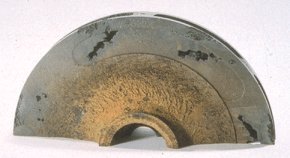|
|
|
|
• EC • Season Cracking • Caustic Embrittlement • Intergranular • SSC • LME • Impingement • Cavitation • FAC • Erosion • Fretting • Index |
|
Different Types of
Corrosion
|
|
Cavitation Corrosion, Cavitation Damage, and Cavitation Erosion |
|
|
Recognition of Cavitation Damage |
|
|
What is Caviation? Cavitation
refers to the the formation and rapid collapse of cavities or bubbles of
vapor or gas within a liquid resulting from
mechanical or hydrodynamic forces. What is Cavitation Corrosion? Cavitation Corrosion refers to the conjoint action of cavitation and corrosion. What is Caviation Erosion? Cavitation Erosion refers to the conjoint action of cavitation and erosion. What is Cavitation Damage? Cavitation Damage refers to the degradation of a solid body resulting from its exposure to cavitation (This may include loss of material, surface deformation, or changes in properties or appearance). From the standard definitions above, Cavitation Damage includes both Cavitation Corrosion and Cavitation Erosion. The sub-classification of cavitation damage into cavitation corrosion and cavitation erosion makes no practical sense.
Cavitation damage occurs in hydraulic
turbines, ship propellers, pump impellers, and other surfaces where
high-velocity liquid flow and pressure
|
|
|
Mechanisms of Cavitation Damage |
|
|
What causes Cavitation Corrosion, Cavitation Damage, and Cavitation Erosion?
Cavitation damage has been attributed to both corrosion and mechanical effects. In the former case, it is assumed that the collapsing vapor bubbles destroy protective surface films and thus increase corrosion. Calculations have shown that rapidly collapsing vapor bubbles produce shock waves with pressures as high as 60,000 psi. Forces this high can produce plastic deformation in many metals.
The presence of solid or abrasive particles is not required for cavitation damage but will accelerate the damage.
What is the difference between Erosion Corrosion and Cavitation Damage? Cavitation-corrosion is a special form of erosion-corrosion. It is caused by formation and instantaneous collapse of innumerable tiny vapor bubbles that result in pits on the metal surface.
Other damage mechanisms related to cavitation damage include: Flow accelerated corrosion (FAC)
|
|
|
Prevention of Cavitation Damage |
|
|
How to prevent Cavitation Damage? In general, cavitation damage can be prevented by the techniques used in preventing erosion corrosion. Also, there are some specific measures. Cavitation damage can be reduced by changing design to minimize hydrodynamic pressure differences in process flow streams.
|
|
|
For more details on Cavitation Corrosion,
Cavitation Damage, and Cavitation Erosion |
|
|
More details on Cavitation Corrosion, Cavitation Damage, and Cavitation Erosion are included in the following corrosion courses which you can take as in-house training courses, course-on-demand, online courses or distance learning courses:
If you require corrosion expert witness or corrosion consulting service on Cavitation Corrosion, Cavitation Damage, and Cavitation Erosion, our NACE certified Corrosion Specialist is able to help. Contact us for a quote. |
|
| Home | Subject Index | Contact Us | PDF |
Copyright © 1995-2025.. All rights reserved. |
